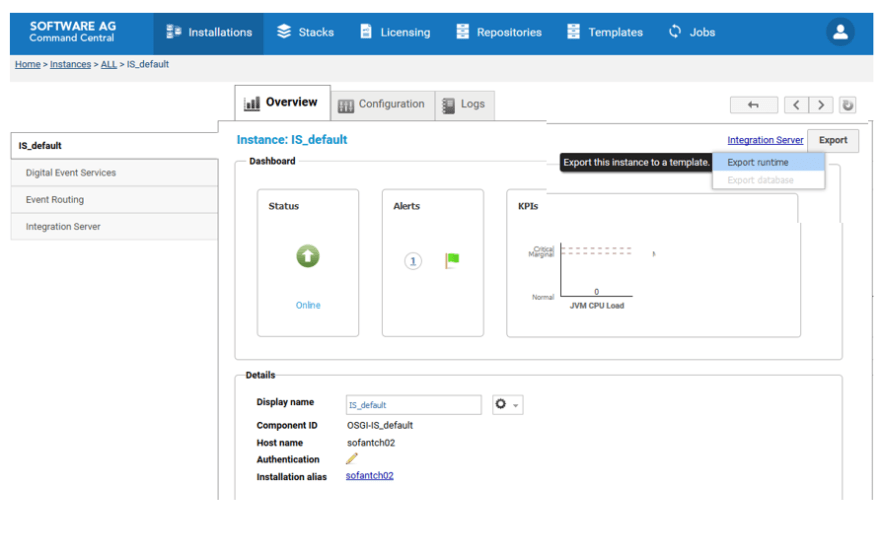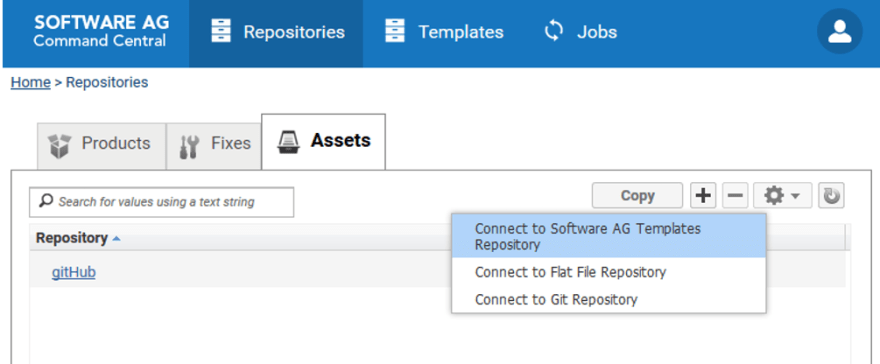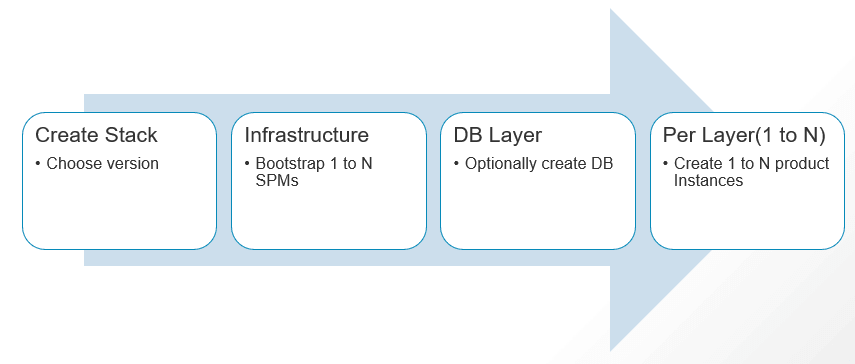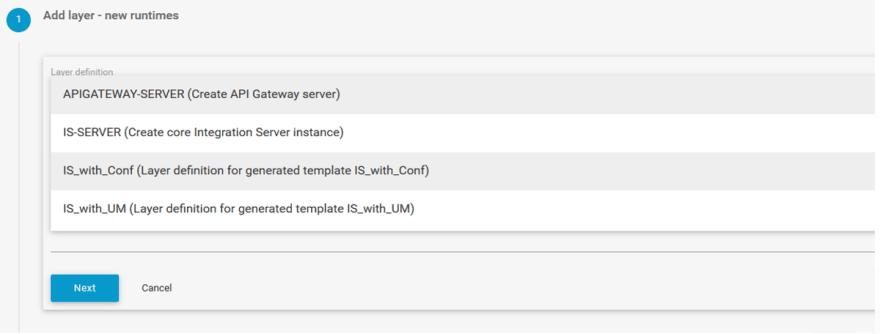Install, Fix, Replicate - made easy with Command Central

tonipetov
Posted on February 6, 2020
Set up and replicate your infrastructure with Stacks & Layers
The latest version of Command Central brings long-awaited features for better UX and easy infrastructure setup.
What changed in Command Central?
Command Central is not new in our product set. It came with the promise of scalable installations, central fix management, configurations management, license management and replication of the environments. We delivered these promises, but they came via a very complex product that required lots of specific knowledge. The bar for using the product was set high and this discouraged many small- to medium-sized customers. Version 10.5 tackles this challenge with its improved UX via a Stacks & Layers functionality.
Introduction of Stacks & Layers
The concept of Stacks & Layers is new in the webMethods’ world, but it was inspired by the typical installations of our customers. What we’ve discovered is that any solution (consisting of one or more installations) can be split into multiple runtime layers – a SoftwareAG Platform Manager (SPM) can be mapped to an infrastructure layer, Universal Messaging builds up a messaging layer, an Integration Server instance creates a layer that is responsible for the integration flows, API Gateway may build an API layers and so on. Those layers are often stretched over multiple machines and create together a solution environment. Figure 1 shows a sample stack with multiple runtime layers on four different hosts.
Figure 1: Stack & Layers Structure
The common properties of a stack are:
- All installations should have the same webMethods version
- All installations on all hosts should reside in the same installation directory
- All products to be grouped in a layer should have the exact same instance name – e.g. Integration server instances with instance name “is_default” can build the integration layer, where Integration Server instances with instance name “is_bpms” can build the BPMS layer.
The database layer is a special one as its purpose is to connect to an external relational database and create the schemas required for the components to run. The database layer should be always be created just on a single node of the stack, as it controls an external shared resource.
Creation of Stacks & Layers
Following the described logic of stacks, it makes sense to create them layer by layer starting from the infrastructure (SPM) and then building additional functional layers on top of it. To create each layer, Command Central comes with the concept of micro-templates, that encapsulates the installation, fix provisioning and configuration of a single product. Contrary to the concepts of templates in Command Central up to now, those micro-templates are not supposed to be edited manually.
Existing Installations
The existing installation can be manually added to stacks layer by layer.
Benefits of an Installation with Stacks & Layers
Stacks & Layers offers the following benefits when performing the installation over the classic Command Central UI or Software AG Installer:
- Installation of fixes in one session with the product installation
- Installation of a product layer on multiple machines at once
Prerequisites
The following prerequisites need to be fulfilled to start a stack installation:
- Download CCE bootstrap installer for the desired version and operating system and copy it into ${CommandCentral_HOME}/profiles/CCE/data/installers
- Define product and fix repositories
- In Command Central, configure the Command Central instance itself by selecting from the main instance tab of the classic UI – CCE-> Command Central Server->Configuration->Credentials and define any credentials or SSH keys that will be used when connecting to remote machines. Note the alias as it will be used later during installation.
- Choose Repositories from the upper navigation tab, then Assets and from the “+” sign select “Connect to a SoftwareAG templates repository”. This action will, by default, connect to GitHub.com/SoftwareAG and download the latest micro-template samples available there. If no Internet connection is available from the Command Central server – choose the zip option (the GitHub repository allows the be downloaded as a zip).
Figure 2: Import Default Templates
Workflow
Once the prerequisites are fulfilled, the creation of a layer follows the logic displayed in Figure 3
Figure 3: Stacks & Layers Creation Flow
After creating the stack for a version, a customer can start installing the infrastructure layer locally or remotely. If the infrastructure layer is installed on multiple nodes simultaneously, which is defined with a comma-separated list of hosts, the SPM will connect to every host with the same credentials or SSH keys and will create SPM installations in the exact same directory.
After the infrastructure layer is bootstrapped, you can create additional layers that can again run or all or a subset of the nodes in the stack. By selecting Add layer->New runtimes you’ll see several available layer definitions. Those are the imported micro-templates definitions covering the standard product sets. Select a product and proceed to the installation details. You’ll be prompted to select product repository, fix repository, licenses and standard product settings. That is because fixes will automatically be applied along during the product installation.
It must be noted that if the customer has not purchased a selected product, the installation will fail as the product will not be available in the product repository.
Replication
Command Central 10.5 offers an instance replication mechanism. Often an administrator would like to create a product instance containing specific layered products, fixes, and custom configurations. This sample instance would then be replicated on other environments “as is.” For this, the administrator would need a sandbox environment and one or many target environments. The replication will then have the following workflow:
- Install a product instance with Stacks & Layers<!--/li-->
- Modify the instance
- Add custom layered products (in the integration server case) via the Command Central installer tree – e.g. install additional adapters, BPMS, etc.
- Add custom fixes
- Add custom configuration
- Save the product instance as layer definition as depicted in Figure 4. To keep the properties manageable, select only the configurations that were changed.

Figure 4: Export Runtime into Template
- Go to Stacks & Layers and apply the saved product instance to a target stack. The layer definitions lookup will be automatically populated with the recently saved product instance. By applying it you’ll replicate the instance to a target environment.
Figure 5: Use the Exported Template to Create a New Layer
Conclusion
Stacks & Layers are a new way of creating and manipulating the webMethods infrastructure, aiming to streamline all installation-related activities in one wizard – product selection, fix installation and basic product configuration.
Replicating the environment has always been a desired feature from our medium/large customers. Previously it related to the development of large yaml files that described the whole environment. We deviated from this approach by allowing the customers to modify and replicate single instances. This is significantly less complicated and does not require specific yaml or Command Central knowledge.
To easily try out the Stacks&Layers functionality, use our latest official Command Central docker image.

Posted on February 6, 2020
Join Our Newsletter. No Spam, Only the good stuff.
Sign up to receive the latest update from our blog.



